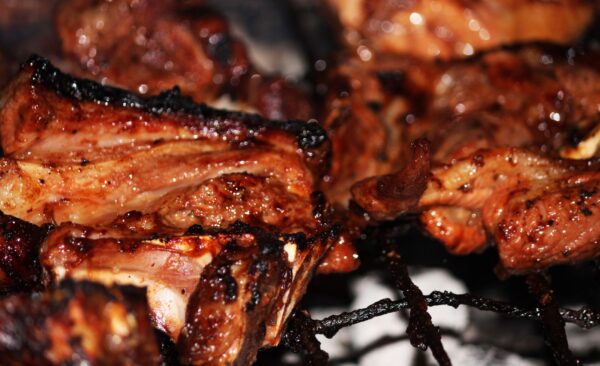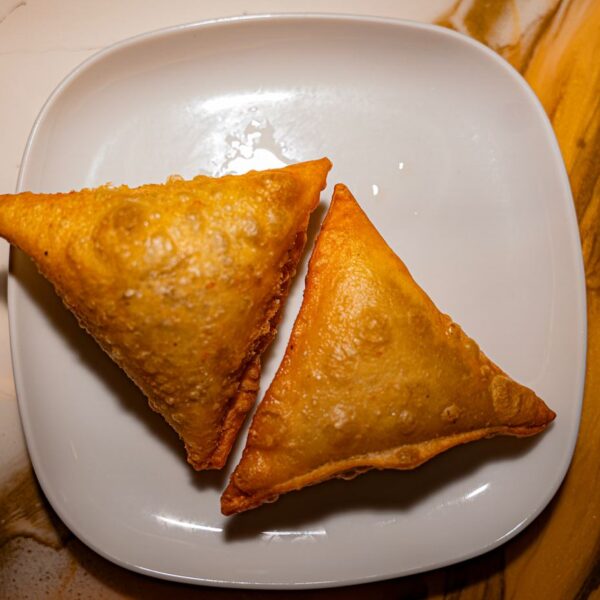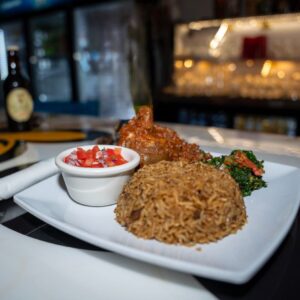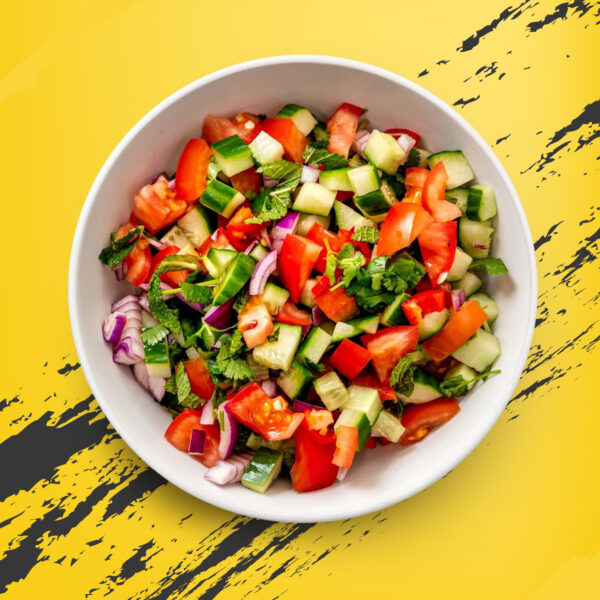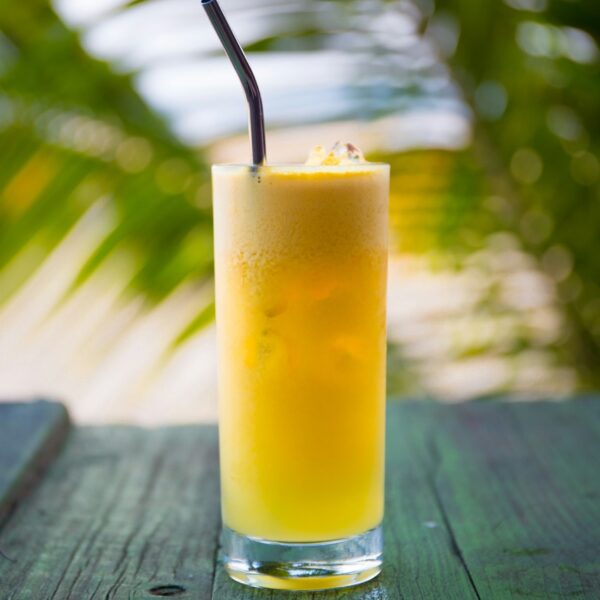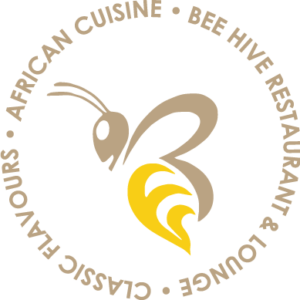Kenyan cuisine is a vibrant and rich expression of the country’s culture, heritage, and history. Located at the crossroads of East Africa, Kenya is home to diverse ethnic groups, each contributing to the unique blend of flavors, spices, and cooking techniques. From the coastal influences of the Indian Ocean to the hearty, flavorful dishes of the interior highlands, Kenyan cuisine offers a diverse palette of tastes and textures that is both exciting and comforting.
In this article, we will take you on a flavorful journey through some of the most iconic dishes of Kenya. You’ll discover the ingredients, preparation methods, and cultural significance behind each meal, helping you better appreciate why Kenyan cuisine is gaining popularity around the world. Whether you’re new to African food or a seasoned enthusiast, this exploration of Kenyan culinary traditions will leave your mouth watering for more.
A Brief Introduction to Kenyan Cuisine
Kenyan food is a reflection of its geography and history. With coastal regions, fertile highlands, and vast savannas, the natural resources available have shaped the diet of the people. Grains like maize, millet, and sorghum are staples, while beans, lentils, and vegetables play a prominent role. Kenyan cuisine also draws influence from the Indian Ocean trading routes, incorporating spices like cumin, cardamom, and curry powder, which were introduced by Arab and Indian traders centuries ago.
Each region in Kenya has its own unique dishes and culinary traditions. In Nairobi and the central highlands, hearty stews made from beef, goat, or chicken dominate the table, while coastal regions are known for their seafood and coconut-based dishes. No matter where you go in Kenya, food is a central part of community and family life, often shared with great pride and hospitality.
Ugali: The Heart of Every Kenyan Meal
One dish that unites all Kenyans is Ugali, a simple yet essential food made from maize flour and water. Ugali is a staple carbohydrate that is served with almost every meal, whether it’s with vegetables, meat, or fish. It has a dense, dough-like texture, and its neutral flavor makes it the perfect complement to the rich, spiced stews and sauces that define Kenyan cooking.
Ugali holds cultural significance beyond its role as a staple food. It is seen as a symbol of unity, as it’s consumed by people across all social and economic backgrounds. Families gather around a shared pot of Ugali, using it to scoop up flavorful stews and vegetables by hand. The process of eating Ugali is often a communal experience, fostering connection and warmth among those at the table.
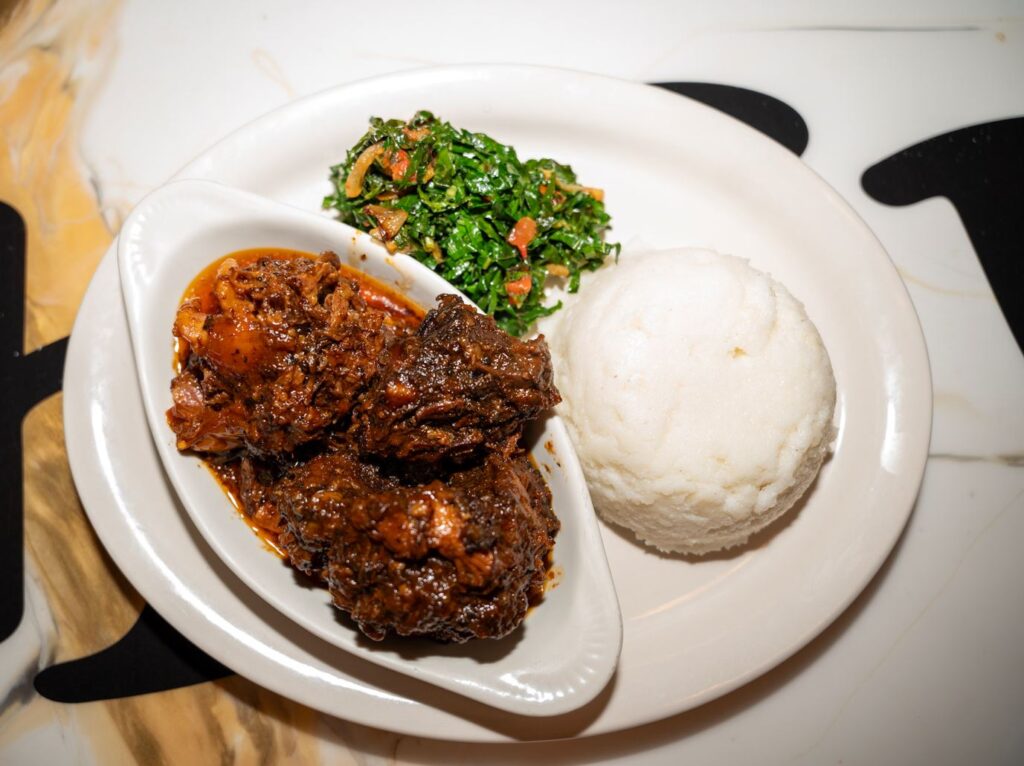
How Ugali is Made
Making Ugali is simple but requires some skill to get the consistency just right. Maize flour is gradually added to boiling water while being stirred continuously with a wooden spoon or “mwiko.” As the mixture thickens, it is kneaded until it forms a firm, dough-like texture. It is then shaped into a mound and served hot alongside a main dish.
Ugali pairs well with a variety of dishes, including vegetables like Sukuma Wiki (collard greens), spicy bean stews, or rich meat curries. Its versatility makes it a cornerstone of Kenyan cuisine.
Nyama Choma: Kenya’s Beloved Barbecue
Another iconic dish in Kenyan cuisine is Nyama Choma, which translates to “grilled meat” in Swahili. This popular barbecue dish is a favorite at social gatherings, from casual get-togethers to large celebrations. Nyama Choma is typically made with goat, beef, or chicken, which is marinated in a blend of spices and grilled over an open flame until it is tender and flavorful.
The beauty of Nyama Choma lies in its simplicity. The meat is often seasoned with just salt and pepper, allowing the natural flavors to shine through. The key to a good Nyama Choma is in the grilling technique, which requires careful attention to ensure the meat is cooked to perfection—crispy on the outside and juicy on the inside.
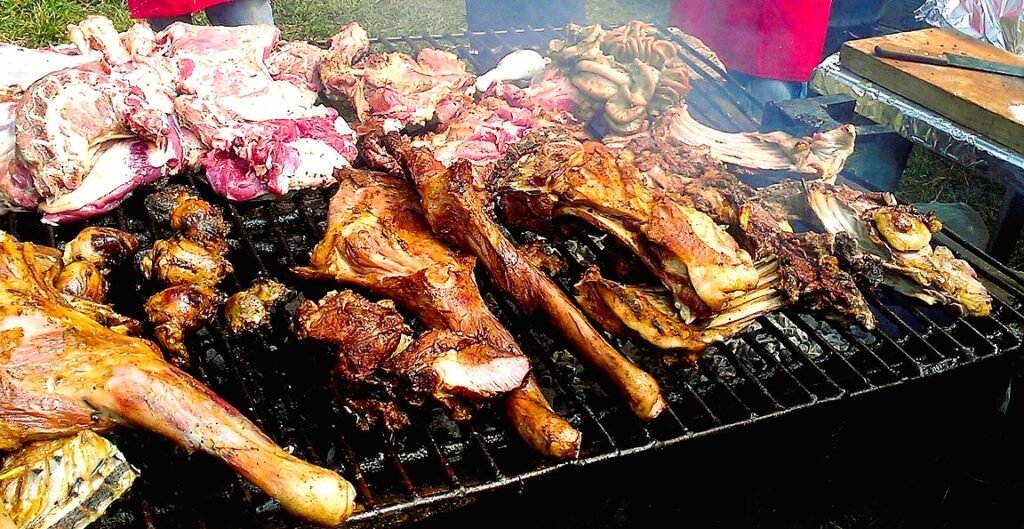
The Nyama Choma Experience
In Kenya, Nyama Choma is more than just food; it’s an experience. It is often enjoyed in open-air restaurants known as “Choma joints,” where customers can watch the meat being grilled in front of them. The meat is served hot off the grill, accompanied by Kachumbari, a fresh salad made from tomatoes, onions, and cilantro “dania”. Ugali or Mukimo (a mashed mixture of potatoes, peas, and corn) are common side dishes.
Nyama Choma is deeply ingrained in Kenyan social culture. It is a meal that brings people together, fostering conversation and camaraderie. Whether it’s a group of friends at a local joint or a family celebrating a special occasion, Nyama Choma is always at the center of the feast.
Pilau: Fragrant Rice with a Spice-Infused Twist
Pilau is a fragrant rice dish that has its roots in the coastal regions of Kenya. Influenced by Indian and Arab traders who brought spices to East Africa, Pilau is made by cooking rice with a blend of spices such as cumin, cinnamon, cardamom, and cloves. It is often served with meat, chicken, or vegetables, and the spices infuse the rice with a rich aroma and flavor.
Pilau is a dish that is often reserved for special occasions, such as weddings, holidays, and family gatherings. The careful preparation and use of expensive spices make it a prized dish that is associated with celebration and hospitality.
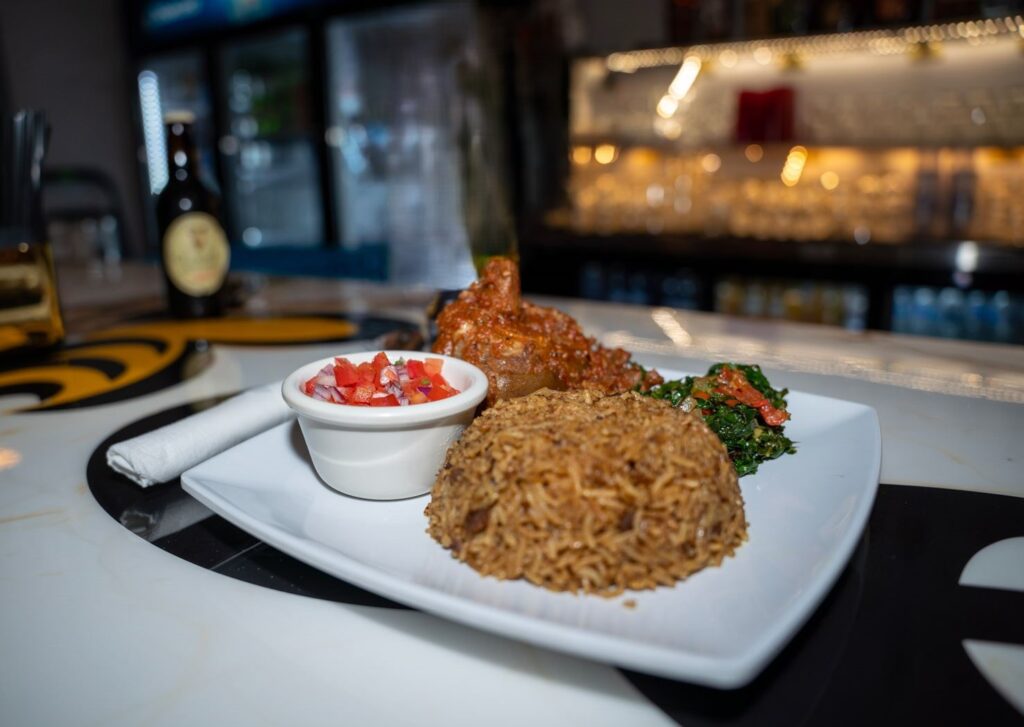
How Pilau is Made
To make Pilau, meat is first browned with onions and garlic in a large pot. A mixture of spices is then added, followed by rice and water. The dish is simmered until the rice is cooked and the meat is tender, resulting in a flavorful one-pot meal. Pilau is typically served with a side of Kachumbari or a simple vegetable salad to balance the richness of the dish.
The distinct flavor and aroma of Pilau make it a standout dish in Kenyan cuisine. Its use of spices showcases the influence of foreign traders, while its place in Kenyan culture speaks to the importance of sharing food during times of celebration.
Sukuma Wiki: A Nutritious and Flavorful Side Dish
No exploration of Kenyan cuisine would be complete without mentioning Sukuma Wiki, a popular side dish made from collard greens. Sukuma Wiki, which translates to “push the week” in Swahili, is a staple vegetable dish that is both nutritious and affordable. It is commonly eaten with Ugali and often serves as a quick, everyday meal for many Kenyan households.
Sukuma Wiki is cooked with onions, tomatoes, and sometimes a bit of garlic or chili for added flavor. It is stir-fried until tender and can be paired with a variety of main dishes, including meats, beans, or stews.

Health Benefits of Sukuma Wiki
Collard greens are rich in vitamins A and C, making Sukuma Wiki a highly nutritious addition to any meal. Its affordability and ease of preparation have made it a beloved dish across Kenya, especially among those looking for a healthy, plant-based option.
Sukuma Wiki’s simplicity belies its importance in Kenyan cuisine. It is a dish that sustains, nourishes, and brings people together, reflecting the resilience and resourcefulness of the Kenyan people.
Whole Tilapia: A Taste of Kenya’s Coastal Waters
Kenya’s coastline along the Indian Ocean provides an abundance of fresh seafood, and one of the most popular dishes is Whole Grilled Tilapia. Tilapia is a freshwater fish that is known for its mild flavor and tender texture, making it the perfect canvas for Kenya’s bold spices and grilling techniques.
Whole Tilapia is often marinated in a blend of garlic, ginger, and spices before being grilled over an open flame. It is served with a side of Ugali or rice, along with Sukuma Wiki or other vegetables.
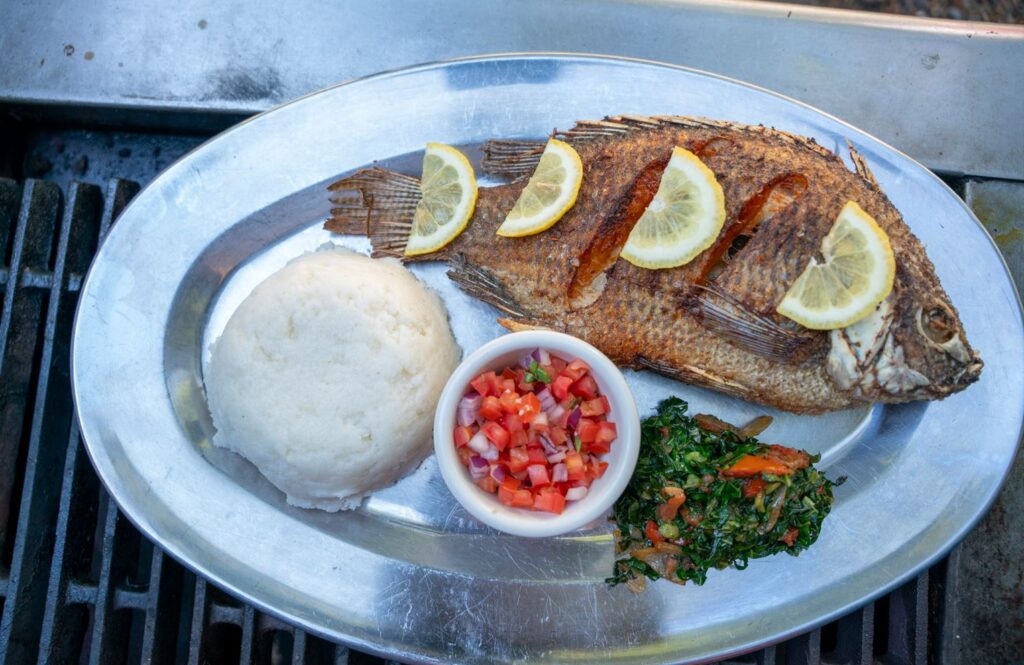
Cultural Significance of Tilapia
Fish plays an important role in the diets of coastal communities in Kenya, and Tilapia is a popular choice due to its availability and affordability. Grilled Tilapia is a dish that is enjoyed by people of all backgrounds, whether dining at home or in a seaside restaurant.
The preparation and enjoyment of Whole Tilapia reflect the coastal influences on Kenyan cuisine, with an emphasis on fresh ingredients and simple, flavorful cooking methods.
Conclusion
Kenyan cuisine is a celebration of the country’s diverse landscapes, cultures, and history. From the staple Ugali to the flavorful Nyama Choma, each dish tells a story of the people who prepare and enjoy it. Whether you’re exploring the hearty stews of the highlands or the seafood delights of the coast, Kenyan food offers a world of flavor that is sure to satisfy any palate.
At the Beehive Restaurant, we take pride in bringing the authentic tastes of Kenya to your table. Our menu features a wide variety of traditional dishes, each prepared with the finest ingredients and a commitment to preserving the culinary traditions of our homeland. We invite you to join us on a culinary journey through Kenya and experience the rich flavors of Africa for yourself.
Beehive Restaurant and Lounge is a vibrant culinary destination in Portland, Oregon, offering a unique blend of authentic African cuisine infused with the sweetness of honey. Whether you’re joining us for a meal or a special celebration, Beehive is your hive of warmth, hospitality, and exceptional culinary delights. Connect with us on social media and join our community to stay updated on our latest offerings and events!


